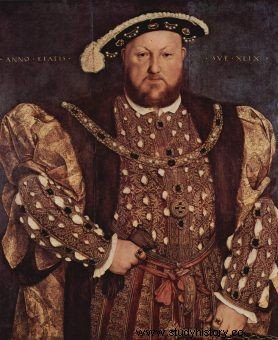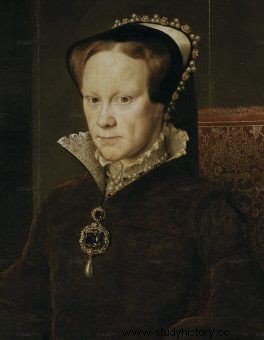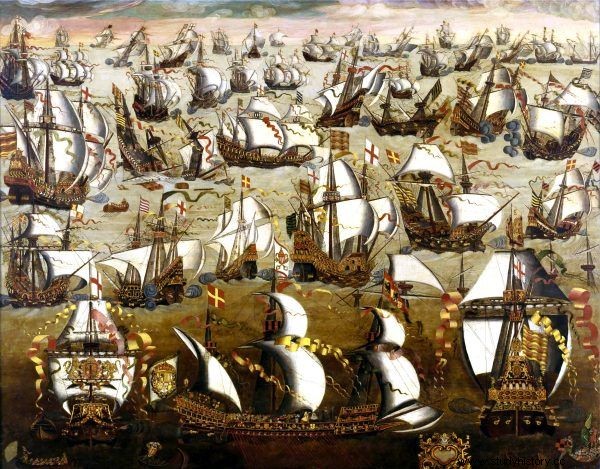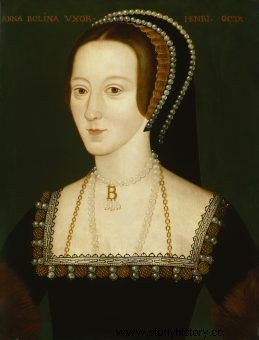Probably no dynasty in the history of the world enjoys similar popularity. Hundreds of books, dozens of films, and a strikingly popular series were written about the Tudors, who ruled England in the 15th and 16th centuries. Why about them? What is so remarkable about the history of this one family?
I. Characters like soap operas
First of all, they are extremely colorful and bloody characters. Take, for example, the founder of the Henry VII dynasty:an exile who never met his father and spent his youth in France.
He returned to his homeland at the head of mercenaries to defeat Richard III and take the throne. He spent most of his reign fearing for the power and life that his competitors had been after. Disliked by his subjects, he was marked by stinginess and emotional coldness. He ruled for 24 years and outlived his wife and son.
II. Monsters and cynics that the world has not seen
And that's just the beginning. His successor - Henry VIII - became famous as a madman with passion murdering wives and political opponents.
He is a sexually obsessed ruler who for private matters did not hesitate to break with Rome . Greedy card player and dice player, and finally a syphilitic.

The famous Henry VIII Tudor. He sat on the English throne for almost 40 years (source:public domain).
III. Incredible contrasts
On the other hand, Henry VIII was a brave soldier and gifted commander, musician, composer and poet, author of respected theological treatises, a skillful politician and diplomat.
Monster and genius - it was written about him. Few countries can boast such a colorful figure on the throne, a figure that begs to be portrayed in a novel or film!
IV. Own Cinderella… who became Baba Yaga
Next:Henry VIII's daughter, Maria I, was first adored by her father, later removed and humiliated, and served as her sister's maid. A zealous Catholic at the Protestant court, she refused to be persuaded to change her faith, and was therefore omitted by her father in her succession rights.

Henry VIII's daughter - Maria I Tudor. The nickname "Bloody Mary" probably says it all (source:public domain).
However, when she took the throne, she decided to remove the Protestants from England, which resulted in the Catholic terror unleashed by her in the country, and she herself gained the less glorious nickname of Bloody Mary. Married to the Spanish Habsburg, which did not make her popular among her subjects, did not have children.
V. Feminist accents, exactly as expected by the 21st century recipient
Her sister Elizabeth took the throne after her. As a child, she lost her mother sentenced to death by Henry VIII at an early age, deprived her of succession rights, declared illegitimate and relegated to the role of a courtier.
After the death of sister Maria, she unexpectedly became queen and, as a zealous Protestant, carried out further religious reforms deepening the departure from Catholicism. Beautiful and charismatic, with long red hair, she was a unique, attention-grabbing character.
She never married, although many candidates applied for her hand (including Tsar Ivan IV the Terrible). She claimed to be married only to England. She was also a gifted politician, diplomat and commander, adept at governing England without the aid of her husband-king.
The victory over the Spanish Great Armada is one of the national English myths to this day. She was called Elizabeth the Great and the Virgin Queen. Her life is a true Hollywood tale:from a humiliated royal child to a powerful, independent queen.
VI. An extremely celebrity dynasty
The very stories of the main characters should justify the Tudor phenomenon. Each of them is worth a separate book, movie or series. These are actually ready-made scenarios. However, other dynasties also stand out in this respect. What else, then, speaks for the Tudors?
First of all:the human emotions that fuel the history of this family. Today's (and not only today's) audience loves to read about the events and dramas in the lives of celebrities, and this is what the chronicles of the Tudor rule are according to modern criteria.

The detention of the Great Armada - one of the greatest successes of Elizabeth I Tudor (source:public domain).
Powerful rulers anointed by God struggle with very human feelings:jealousy, hatred, lust, fear. They must fight daily to maintain their power and preserve their lives, trying to identify among courtiers, advisers and even spouses who may threaten them. Wealth, sex, intrigue, love and hatred accompany them every day. It's like the series "Dynasty", but in costumes from the 16th century.
Unusual personalities such as Henry VIII, Maria Tudor or Elizabeth I combine greatness and smallness. The mighty rulers of the superpower sometimes turned out to be very petty:suspicious, jealous, greedy, irritable. Henryk was easily angry and handed down death sentences. Mary suppressed Anglicanism in every way by not shying away from burning heretics at the stake. Elizabeth was vain, quick-tempered, and didn't take good time to talk about topics she didn't like (marriage, for example).

Anna Boleyn was executed in 1536. One of the women who felt the effects of her marriage to Henry VIII very painfully (source:public domain).
VII. Strong supporting characters
What about the characters - let's call them - secondary? The six unhappy wives of Henry VIII, two of whom gave the head to the executioner's ax, but previously desperately tried to maintain their position at court and not lose the king's kindness. Tragic Maria Stuart, Queen of Scots, sentenced to death by Elizabeth. Filip Habsburg, husband of Maria Tudor, unloving his wife 11 years older, known for his gloomy temper, fanatical Catholic and enemy of Protestantism who left his wife and returned to Spain. Or the lover of the Virgin Queen Elizabeth the Great, Robert Dudley, whom she was said to have wanted to marry.
They all played their own games and tried to implement their own plans:to gain the ruler's trust, a position at court, wealth, a favorable marriage, and at least save their lives ...
Is it not like the merciless intrigues and power struggles we know from the popular series "Game of Thrones"? There, too - as in the Tudor times - the intrigues amaze with their ruthlessness, the blood flows in streams, and the most important characters of the story lose their lives.
VII. A truly cinematic scenery and an imperial background to the events
Finally, the third attractive element is the attractive staffage of Tudor tales:16th-century England, rich costumes, horses, weapons, castles, palaces among which the action takes place, beautiful women and strong men. And to the personal feelings and tragedies of people there is also great politics.
England is at war with France, Spain and Scotland. He suppresses an uprising in Ireland. He maintains diplomatic contacts with the Republic of Poland, Sweden, Turkey, Austria and the Netherlands. He breaks with Catholicism, which causes many dramatic events. It all deserves a book / series / film setting. And no wonder it got it.
